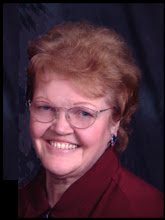 More than 1 million Swedes left their homeland between 1850
and 1930. In the 19th century
Sweden, a growing population and several years of crop failures left many
people without food and livelihood. In
addition, social and political discontent, the desire for religious freedom,
(our ancestors) and the wish to escape compulsory military service pushed
Swedes from their homeland. Economic
opportunity – in both industry and agriculture – was the largest draw for
Swedes to North America and especially to Chicago
More than 1 million Swedes left their homeland between 1850
and 1930. In the 19th century
Sweden, a growing population and several years of crop failures left many
people without food and livelihood. In
addition, social and political discontent, the desire for religious freedom,
(our ancestors) and the wish to escape compulsory military service pushed
Swedes from their homeland. Economic
opportunity – in both industry and agriculture – was the largest draw for
Swedes to North America and especially to Chicago
As this happened, Chicago was transformed into the Swedish
capital of North America. In 1880, when
Chicago was 43 years old, 13,000 residents out of 500,000 in Chicago were
Swedish. By 1890, Swedes were the third
largest ethnic group in the city of Chicago behind only the Irish and the
Germans. By 1900, Chicago had the second
largest concentration of Swedes in the world, second only to Stockholm in
Sweden.
Of interest is after the great Chicago fire in 1871, most
Swedes moved outside the city, which is now in the suburbs. The reason:
they wanted wooden log houses, and Chicago no longer allowed wooden
houses in the city, because of the fire.
Carl emigrated in 1891, before Ellis Island was in the picture. He probably would have entered America through the Castle Garden Immigration facility. In 1892 Ellis Island opened its doors to immigrants from all over the world. Gerda arrived in American in 1900 through Ellis Island. It is estimated that almost 20 million people came through Ellis Island between 1892 and 1920. Single women made up one-third of the people who emigrated from Sweden to America between 1890 and 1910. Most of those women became domestic help. Gerda fits in this statistic.
Typical Kitchen
Beautiful linens - for which the Swedish are famous.
Note the wedding cake.
It was made by rolling the dough onto the wooden spit
then cooking it over hot coals.
It is hard to pinpoint Swedish Costumes as almost every
county had their own folk costumes.
Very typical piece of Swedish Furniture.
I loved this lamp. Where can I get one like it?
These curtains I can make,
but the wooden windows - not so easy to find.
This stool is made by a carpenter's apprentice to show
he is good enough to start working in the business.
I think most of us have seen the famous Swedish stylized horses.
This one is in the children's museum where children can 'ride' it.
SLEDGE: A sleigh on runners drawn by horses or dogs.
It is used for transporting loads across ice, snow, and rough ground.
Novel idea.
Each shelf is also a tray or bowl to be used elsewhere.
Again - where can I get one.
In some parts of Sweden in very early days,
these bed units would line the walls of a large room.
Various members of family slept in bottom,
and kept their possession in the top.
A curtain could be used for privacy.
This display is beautiful, and from the pictures I have seen,
it typifies the inside of many of the churches.
Can't leave the children out. A great rocking chair for little ones.
DOWN MEMORY LANE
When I (Carolyn) was very young,
my sister and I would play
in a closet downstairs in our home
where there was an old trunk or chest.
It had probably belonged to Grandma or
Grandpa Johnson,
and was used to come to America
with all the belongings they
had at the time.















